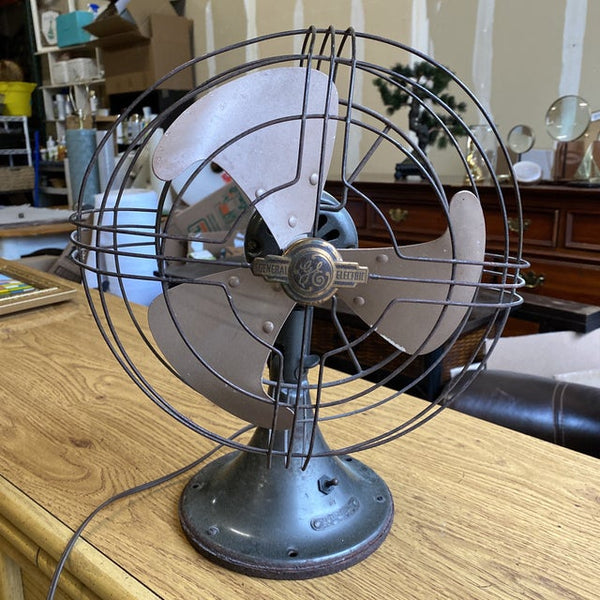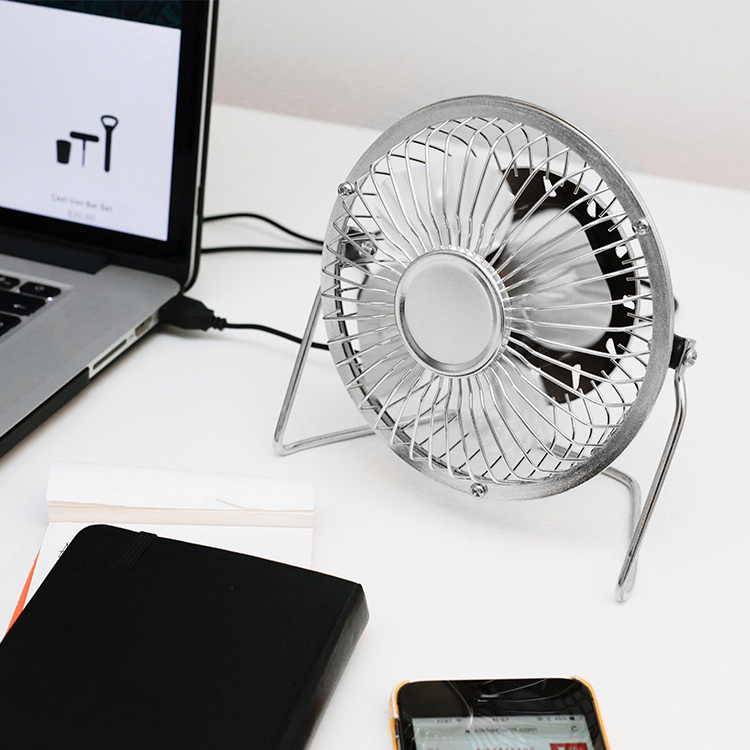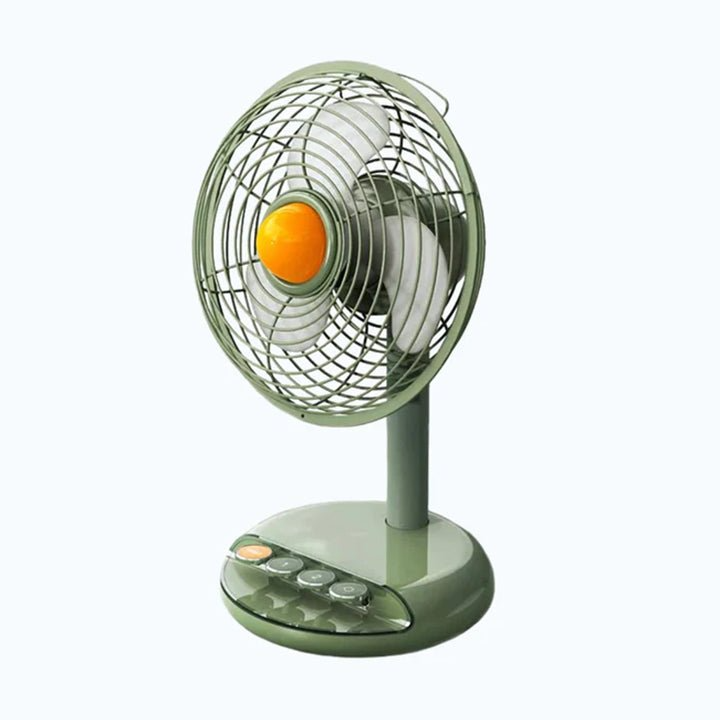Introduction to Vintage Desk Fans
Vintage desk fans hold a special place in our hearts and homes. They blend functionality with aesthetic appeal. In today’s world, where design often meets minimalism, these fans remind us of simpler times. Originating in the late 19th and early 20th centuries, vintage fans were revolutionary. They changed how people experienced comfort in their homes and offices.

Back then, cooling options were limited. People relied on natural breezes, open windows, and architectural designs that encouraged airflow. The invention of electric desk fans brought a new level of convenience. Suddenly, a cool breeze was just a switch away. Individuals and families quickly adopted these devices, making them a staple in many homes.
Today, vintage desk fans are more than just cooling appliances. They are conversation starters, collectibles, and decorative pieces. Many people appreciate their intricate designs and craftsmanship. Some fans even come equipped with unique features that showcase the technology of their time. Collectors seek out specific models, hoping to find that elusive gem.
As we dive deeper into the world of vintage desk fans, we’ll explore their history, design features, and the reasons they’ve maintained popularity over the years. From the early mechanical designs to modern reproductions, these fans have an undeniable charm.
A Brief History of Desk Fans
Early Innovations
The journey of the desk fan began in the late 1800s. Although people used hand-held fans for centuries, these were not powered machines. The advent of electricity opened new doors. In 1882, the first electric fan was created by Schuyler Skaats Wheeler. He designed a desk fan that could easily be placed on a table or desk. This marked the beginning of the electric fan era.
Wheeler’s fan had a simple design. Its blades were made of metal and were powered by an electric motor. This innovation was a game-changer. People could now control their indoor climate far better than before. As electric sources became more common in homes, so did desk fans. They quickly gained popularity among all social classes.
By the 1920s, various manufacturers entered the market. Companies like GE and Westinghouse produced their versions of the electric desk fan. They experimented with different blade designs and materials, as well as adding features like adjustable bases. This led to a wide variety of designs, each catering to different tastes and preferences.
The Mid-Century Boom
The 1940s to the 1960s was a golden age for desk fans. Manufacturers created models that not only functioned well but also looked beautiful. This was the period when fans started to transition from plain industrial designs to more stylish and colorful varieties.
During this era, designers began to understand the importance of aesthetics. Fans became more than just gadgets; they turned into decorative pieces for homes and offices. Manufacturers played with colors, materials, and shapes. You could find fans with sleek chrome finishes, vibrant hues, and unique designs.
At this time, people began to appreciate vintage furniture and décor. Mid-century modern style was on the rise. It emphasized clean lines, organic shapes, and a mix of utility with art. Desk fans were no exception. They became a part of this aesthetic, fitting seamlessly into modern homes.
As the years went by, technological advancements continued to improve fan performance. Manufacturers focused on producing quieter and more efficient models. However, despite these innovations, it was the vintage designs that continued to capture the hearts of many. The charm of a well-crafted, vintage desk fan remained unmatched in comparison to the new models.
The Resurgence of Vintage Appeal
In recent years, vintage desk fans have experienced a resurgence. People are increasingly looking for unique, authentic pieces to decorate their spaces. Modern consumers are tired of mass-produced items. They seek character, stories, and craftsmanship. Vintage fans fit the bill perfectly.
Many interior designers also recommend incorporating vintage items into spaces. They can add depth and personality to a room. A vintage desk fan can serve as an eye-catching focal point on a desk or side table. It adds charm and nostalgia to any setting.
Additionally, vintage desk fans are often made from durable materials. They boast quality construction that many modern designs lack. A well-maintained vintage fan can last for decades, making it a practical investment as well.
Social media plays a role in this resurgence. Platforms like Instagram and Pinterest feature homes that showcase vintage décor. Many accounts are dedicated to vintage finds, offering inspiration and ideas. Fans from the 1940s, 50s, and 60s are popular items that often appear in these feeds.
Renovation and restoration shows on television also have increased interest in vintage items. Viewers see the charm and character these items can bring into a modern home. It leads people to seek out their own vintage treasures, including desk fans.
Design Features That Endure
Craftsmanship and Materials
Vintage desk fans are appealing largely because of their craftsmanship. Early fans featured metal parts and durable bases. The materials used in their production were often of higher quality than those found in modern fans. For instance, many vintage fans have brass or cast iron components. These materials add a sense of weight and stability.
The attention to detail in these fans is remarkable. Many feature fine engravings or intricate patterns. Some models even showcase artistic designs that were ahead of their time. Each fan tells a story through its design. This craftsmanship surpasses the often-plastic, factory-made parts of modern fans.
Additionally, vintage fans often have unique shapes. Some mimic the look of vintage cars or airplanes, while others reflect popular architectural styles of their time. This variety allows collectors and enthusiasts to find fans that resonate with their personal style or decor.
Functional Features
Despite their age, many vintage desk fans still function well. Their engineering was often designed to last. Many have strong motors that can rotate at various speeds, offering versatility. Some models come with oscillating features, allowing air to circulate throughout an entire room.
Adjustability is another functional aspect. Many vintage fans can tilt and be positioned in various directions. This means that users can direct airflow wherever they desire. This feature remains useful even in today’s modern homes.
Moreover, vintage fans are often quieter than some of today’s models. The robust motors create a soothing hum instead of an annoying buzz. This makes them ideal for workspaces or bedrooms. Users can enjoy a cool breeze without the distraction of excessive noise.
The Market for Vintage Fans
Collecting Vintage Fans
The market for vintage desk fans has its dedicated enthusiasts. Collectors search for specific models, brands, and designs. They often join online forums and communities to share information and tips. These gatherings help keep the passion alive. Enthusiasts share restoration techniques, memorabilia, and stories about their finds.
Finding the perfect fan can be a rewarding quest. Flea markets, thrift shops, and antique stores often hold hidden treasures. While some collectors focus on specific brands, others collect fans based on their color or design.
The thrill of finding a unique or rare piece can be exciting. Some fans gain value over time. Older or special edition models can become sought after, making collecting a great investment.
Restoration and Refurbishing
Many enthusiasts take pride in restoring vintage desk fans. They often find models in poor condition that require a bit of care. Restoration can include cleaning, repainting, and replacing parts. This process not only revives the fan’s functionality but also adds a personal touch to the item.
Refurbishing can be an enjoyable hobby. It allows individuals to engage in a creative project. Some even turn their passion for restoration into a small business. They sell their refurbished fans online or at local markets. There is a growing demand for beautifully restored vintage fans.
People also appreciate the value of sustainability. By refurbishing vintage fans, collectors contribute to recycling efforts. They breathe new life into items that might otherwise end up in landfills.
Decorating with Vintage Desk Fans
Home Aesthetics
Incorporating vintage desk fans into home decor is a fantastic way to add character. They can serve as stunning focal points. A well-placed fan on a vintage desk or side table instantly elevates the space. Additionally, fans can complement various design styles.
For those who adore mid-century modern design, a sleek fan with clean lines fits perfectly. Alternatively, ornate fans can enhance a more traditional or eclectic style. This versatility makes vintage fans appealing for diverse interior design preferences.
Vintage fans can also work well in themed rooms. For example, in a retro diner-inspired kitchen, a 1950s fan can complete the look. In an industrial-themed space, fans with metal finishes can enhance the overall ambiance.
Practical Uses
Vintage desk fans aren’t just decorative; they’re functional too. They provide calming airflow during warm days. Many homeowners prefer using vintage fans as a charming alternative to modern cooling devices. This adds an eco-friendly touch to climate control.
Fans can also circulate air from open windows, ensuring a comfortable indoor environment. They are perfect for those who enjoy both style and function in their home appliances.
Additionally, vintage fans make excellent conversation pieces. Visitors often admire these unique items and inquire about their history. This opens the door for engaging conversations about design and functionality.
Caring for Vintage Desk Fans
Maintenance Best Practices
Caring for vintage desk fans is essential to keep them looking and functioning well. Regular cleaning is the most important aspect. Dust can accumulate in the motor and blades, affecting performance. A soft cloth can easily wipe down the fan’s exterior.
For deeper cleaning, disassembling the fan may be necessary. Ensure you follow proper instructions or consult guides to avoid damage. After cleaning, check the motor and lubrication levels. Keeping the mechanical parts in good condition is crucial for longevity.
Storage Tips
When not in use, storing vintage fans properly is essential. Avoid placing them in humid areas, as moisture can rust metal components. Instead, keep the fan in a dry, climate-controlled environment. If needed, use protective covers to shield them from dust.
Unused fans can also be displayed as decorative pieces. Arranging them on shelves, desks, or side tables adds vintage charm to a home. This ensures that they remain a part of everyday life, even in their inactive state.
Repairing Vintage Fans
If a vintage fan requires repair, consider consulting professionals familiar with these devices. Attempting to fix it without expertise can lead to more problems. Some local restoration specialists offer services that focus specifically on vintage fans.
As you work on caring for and maintaining these cherished items, remember that a little effort goes a long way. Vintage desk fans become treasures that not only cool the air but also connect us to the past.
Conclusion
In conclusion, vintage desk fans are more than just functional appliances. They embody a rich history, exceptional craftsmanship, and unique designs that many modern products lack. Their place in the home extends beyond mere utility, transforming them into valued collectibles and decorative pieces.
The journey of vintage desk fans—from their historical beginnings to their resurgence in popularity—illustrates a larger trend. People increasingly seek authenticity and character in their home decor. Vintage fans fit the bill perfectly. They showcase craftsmanship, durability, and an inherent charm.
For collectors and enthusiasts alike, the journey of finding, restoring, and showcasing these fans is deeply rewarding. They contribute to personal narratives while enhancing home aesthetics. As long as there are individuals passionate about quality and design, vintage desk fans will continue to hold their value and place in our lives.
In the world of home decor, the vintage desk fan stands as a testament to the joys of nostalgia and the charm of bygone eras. Embrace their stories, maintain their legacy, and enjoy the cool breezes they bring into our lives.


